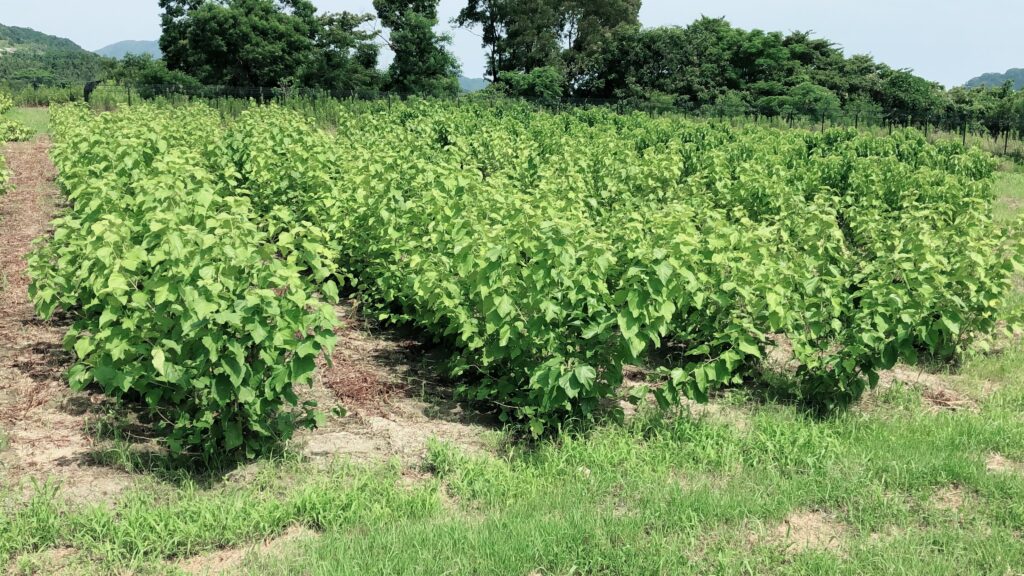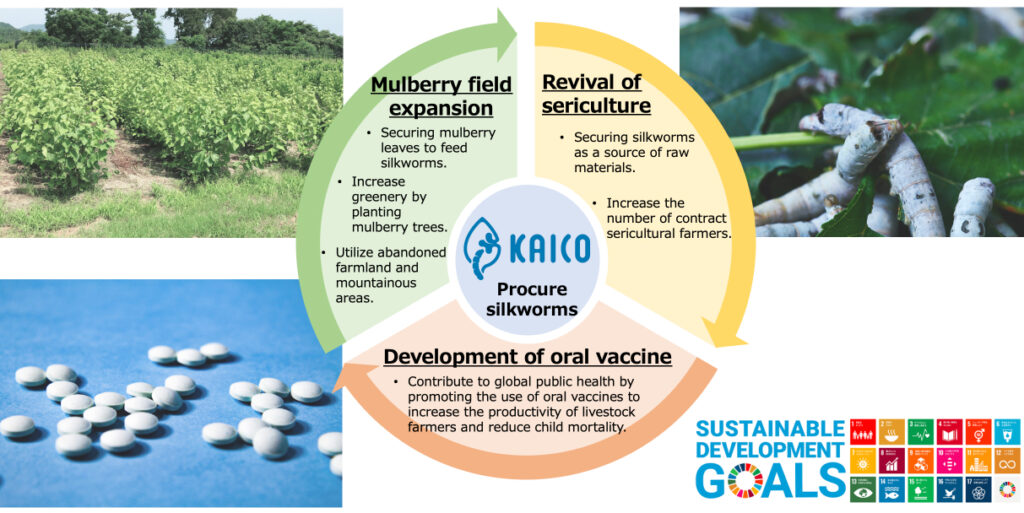SGDs project
At KAICO, we are engaged in a silkworm industry revival project with the aim of revitalizing sericulture and contributing to the global environment and regional revitalization.
The main feed for the silkworms, the raw material for our products, is primarily mulberry leaves. Through this project, we collaborate with local governments to utilize deteriorated farmland and abandoned agricultural land to plant mulberry trees, contributing to the regeneration of degraded lands and abandoned fields, and thereby benefiting the global environment. Additionally, we repurpose unused buildings like closed schools for sericulture, leading to an increase in new workers and job creation, contributing to regional revitalization, community activation, and local economies.
Upon completion of the silkworm rearing, we purchase the silkworms and deliver them as products to the world, creating a cycle for the project. Currently, we are collaborating not only with local governments but also with businesses to implement this project.

The background of our sericulture revival project
KAICO has been developing oral vaccines using the technology to produce proteins with silkworms. However, to deliver these products to the market, securing a stable supply of silkworms, our raw material, is essential.
During the Meiji era, the largest export product from Japan was silkworm cocoons, with an annual production volume of 400,000 tons (approximately 2 billion silkworms). However, the total production of silkworm cocoons in Japan has decreased significantly to 51 tons annually (approximately 25.5 million silkworms), accounting for only about 0.01% of its peak production. Additionally, 60% of sericulture farmers are over 70 years old, indicating an aging workforce in the industry.
Given this current situation in the sericulture industry, our company is proposing sericulture revival projects in collaboration with local governments and businesses, aiming to revitalize regional economies and contribute to regional revitalization.




